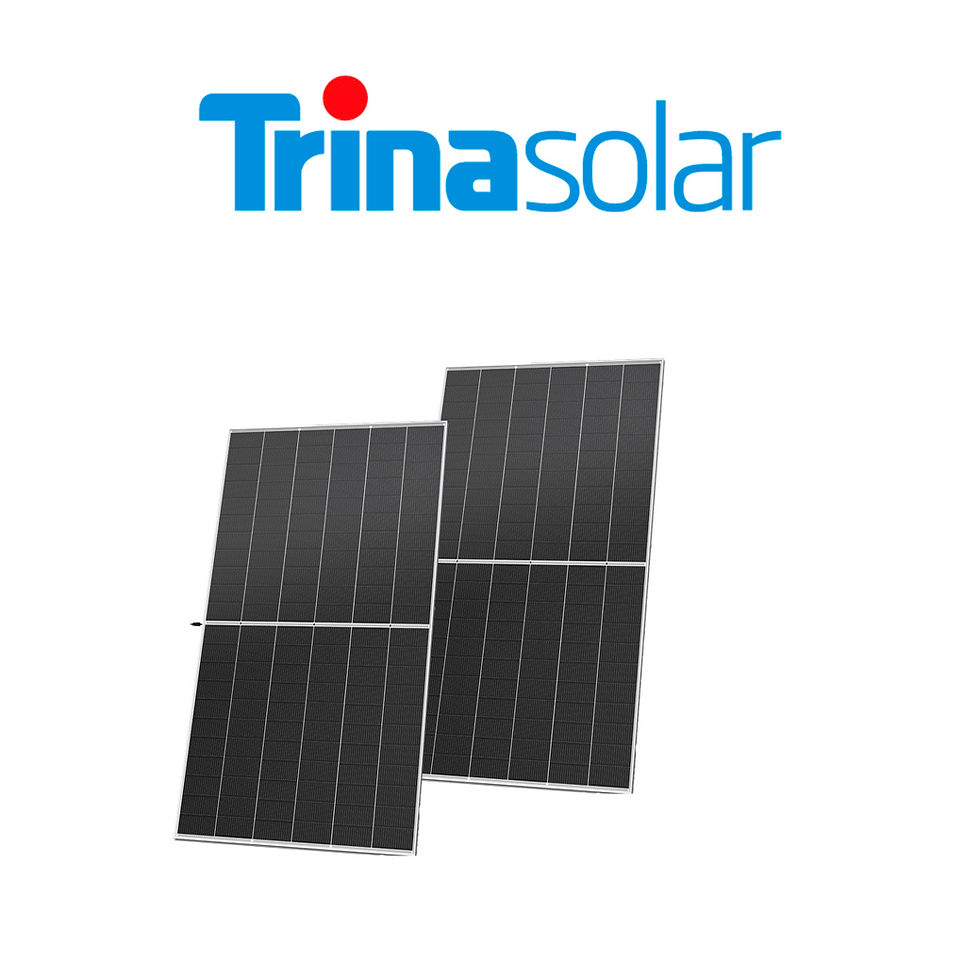Half Cut technology
In recent years, a new technology called "Half Cut" has appeared on the market, literally "cut in half" obviously referring to photovoltaic cells, which is why it is also called Half Cell
What are Half Cell modules? Traditional full cell panels (60 cells) are made with 60 or 72 cells on the whole panel. A half-cell module doubles the number of cells into 120 or 144 cells per panel. The panel is the same size as a full cell panel but with double cells. By doubling the number of cells, this technology creates more avenues for capturing energy from sunlight to send to the inverter. Essentially, Half-Cell technology is the process of cutting cells in half, reducing resistance so that efficiency can increase

Half cut panel image from Trina Solar
The International Technology Roadmap of Photovoltaic (ITRPV) predicts that the market share of half cells will increase from 5% in 2018 to around 40% in 2028. This indicates that Half Cell technology is a strong player against outdated full cell technology .
Traditional full cell panels with 60 or 72 cells produce resistance that can reduce the panel's ability to produce more power. While Half-Cells with 120 or 144 cells have lower resistance, which means more energy is captured and produced. Half-Cell panels have smaller cells on each panel which reduces mechanical stress on the panel. The smaller the cell, the less chance the panel will break. Additionally, Half-Cell technology provides higher output power values and are usually more reliable than traditional full cell panels.

Wiring diagram for a standard solar panel. There are three separate "rows" of cells connected in parallel.

Wiring diagram for a solar panel made with cells cut in half. There are six separate "rows" of cells connected in parallel
Why switch to Half-Cell technology for your next installation? The opportunity to generate more energy for your customers and save them money is at the forefront of selling any rooftop PV system. Half-Cell technology can take your solar installations to the next level. The increase in popularity of Half-cell over the years is due to some very distinct advantages such as:
Excellent performance in low light situations: Half-cell technology is excellent in low light situations. This is due to the design, the increase in the number of cells provides more power to the inverter.
Better shading resistance: A regular panel consists of 3 rows of cells connected in series with bypass diodes. If a cell is shaded, a third of the panel's output can be lost. But in a panel cut in half, there are 6 rows of cells. So if any of the cells are shaded, only one sixth of the output is lost.
Half cell technology is more durable for long lasting performance: HC technology is less susceptible to microcracks due to the small size of the solar cells. Mechanical stress on the entire panel is reduced, reducing the possibility of micro cracks developing. Therefore, HC panels are stronger and less prone to cracking for long periods of time.
Works best in high heat conditions: Half-Cell technology has been shown to work well in high heat conditions. As we know, Italy is never short of warm weather conditions. This is why Half-Cell technology is becoming more and more popular in our market. In general, Half-Cell technology is less susceptible to panel malfunctions.
Split Junction Boxes: Hot spots are very common in poor quality photovoltaic solar panels and can greatly reduce the lifespan of a photovoltaic solar panel. Half-Cell PV panels have less heat under the individual cells on the panel. Hot spots are common and a downside that comes with solar PV systems that receive high levels of constant heat. In some major cases, hot spots can cause fire hazards to the customer's home. Having a split junction box reduces cell heating and the possibility of hot spots occurring.
















